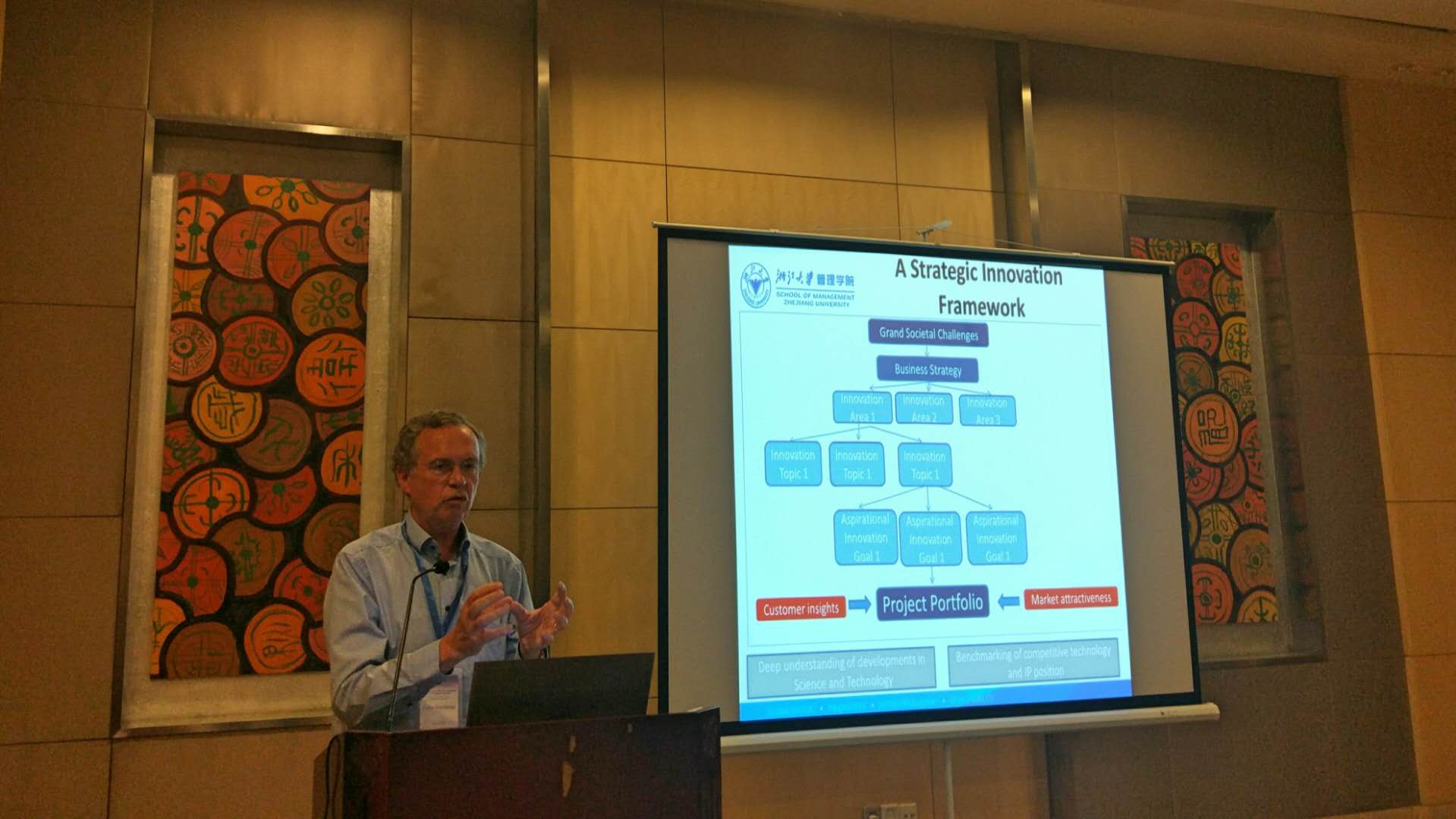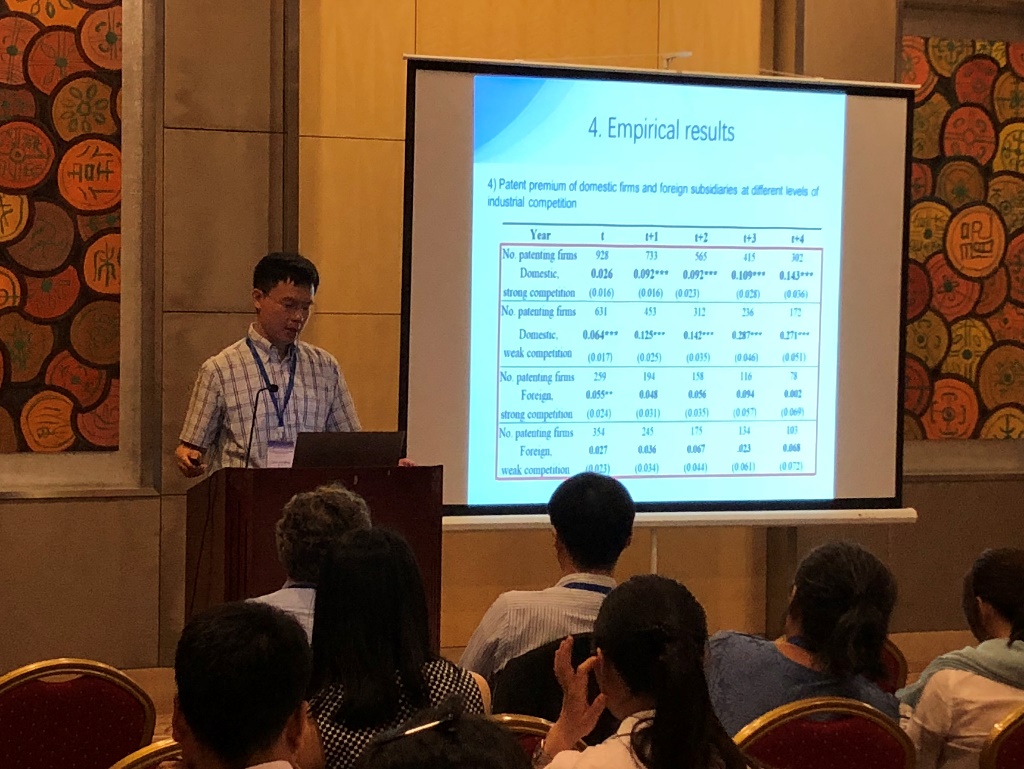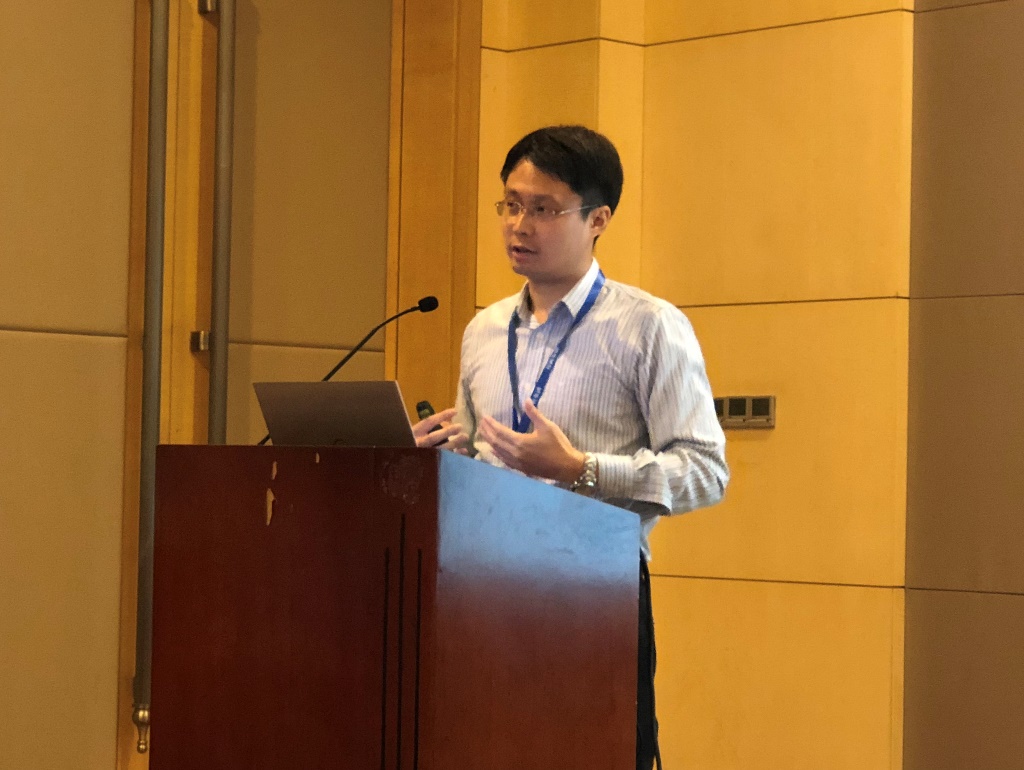2018-06-15
On the afternoon of June 15th, Prof. Can Huang organized the “Intellectual Property and Innovation Strategy” symposium in the Eighth Biennial International Association for Chinese Management Research (IACMR) conference. Prof. Frans Greidanus, Co-Director of the Institute for Intellectual Property Management, Prof. Tony Tong from Purdue University and Prof. Kenneth G. Huang from National University of Singapore spoke at the symposium.

(Prof. Frans Greidanus)
First, Prof. Frans Greidanus delivered a speech on the role of intellectual property in innovation from a practitioner’s perspective. Prof. Greidanus introduced his experience on innovation and IP management in Royal Philips. He highlighted the importance of balancing a company’s regular activities and the creation of new business units. He also explained the project portfolio creation and IP management in projects.

(Prof. Tony Tong)
Next, Prof. Tony Tong presented his research project about linking of Chinese patent data with firm’s data. Firstly, Prof. Tong introduced the patent surge in China during the last few years, which indicates China has become one of the most important destinations of patent application for firms all around the world. Secondly, Prof. Tong explained the method of linking SIPO patents data with the data of Chinese listed firms, Chinese private firms and foreign firms. Prof. Tong discussed the challenges and the future work of the project, such as the utilization of updated data and the launch of a website for general public use.

(Prof. Can Huang)
Then, Prof. Can Huang presented his study on patent premium, i.e. value increment due to patent protection, in countries with weak intellectual property protection, which can be considered as an empirical application of Prof. Tong’ s matched patent data. He found that despite weak IPR protection, patent premium exists for foreign subsidiaries in high-tech industries. However, the results show that patent premium is lower for foreign subsidiaries than for domestic firms due to the liability of foreignness. According to his research, institutional development and industrial competition have different impacts on domestic firms and foreign subsidiaries respectively.

(Prof. Kenneth G. Huang)
Afterwards, Prof. Kenneth G. Huang introduced the institutional regime shift in IPR & firm innovation strategies in China. He addressed that we lack understanding of the reinforcement of IPR in China, especially in the following two aspects: the reactions of firms from different home countries and how innovative state-incentivized firms. Prof. Huang’s study shows that compared with western firms, Chinese firms are less responsive to sudden change in formal IPR regulations since western firms experience a different institutional environment when entering China, and are thus more responsive to the new IPR. For state-owned enterprises, he found that state-owned enterprises under weaker corporate governance tools or weaker public governance produce a larger volume of patents but a smaller proportion of novel patents after the issuance of the major pro-innovation policy in 2006 in China.
The symposium ended with a lively discussion with the audience, focusing on the use of patent data to conduct innovation research.